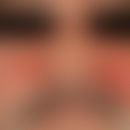Synonym(s)
DefinitionThis section has been translated automatically.
Pediculosis due to infection with crabs.
PathogenThis section has been translated automatically.
Crabs, pediculus pubis.
You might also be interested in
EtiopathogenesisThis section has been translated automatically.
Transmission is possible through close physical contact, sexual intercourse and also through clothing, bed linen and towels.
LocalizationThis section has been translated automatically.
Affected are mainly areas with apocrine sweat glands, pubic hair, genital area, axillary hair, hair in the chest and abdominal region. Rarely, especially in children, eyebrows and eyelashes are affected. See also Blepharitis pediculosa.
ClinicThis section has been translated automatically.
Moderate itching, severe at night, slate blue or red, lentil-sized spots(maculae coeruleae). Crabs and their nits can be easily found with a careful search.
General therapyThis section has been translated automatically.
Either dispose of infested clothing or, if possible, wash hot. See also Pediculosis capitis.
External therapyThis section has been translated automatically.
- Wash the affected areas thoroughly with a liquid syndet; then treat the affected areas with 1% permethrin cream(e.g. Nix Creme; not permitted in Germany, off-label use!) or 0.5% permethrin spirit (e.g. Infectopedicul) One-time rubbing of the affected areas for 30-45 minutes, followed by combing out the nits with a fine comb. S.a.u. Pediculosis capitis.
- In case of eyebrow or eyelash infestation (not uncommon): Dab the eyelashes several times a day with olive oil or Vaselinum alb. The lice and nits can be removed from the eyelashes with tweezers after a few days.
Notice!
Treatment of the contact persons!
LiteratureThis section has been translated automatically.
- Buntin DM et al (1991) Sexually transmitted diseases: Virus and ectoparasites. J Am Acad Dermatol 25: 527-534
- Wendel K, Rompalo A et al (2002) Scabies and pediculosis pubis: an update of treatment regimens and general review. Clin Infect Dis 35(Suppl 2): S146-151
Incoming links (10)
Blepharitis pediculosa; Coeruleal maculae; Felt loss; Lice; Lice eczema; Pediculosis (overview); Phthiriasis; Phthiriasis; Pyrethrins; Sti;Outgoing links (6)
Blepharitis pediculosa; Coeruleal maculae; Pediculosis capitis; Pediculosis (overview); Permethrin; Pruritus;Disclaimer
Please ask your physician for a reliable diagnosis. This website is only meant as a reference.










